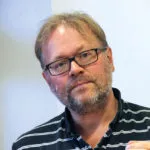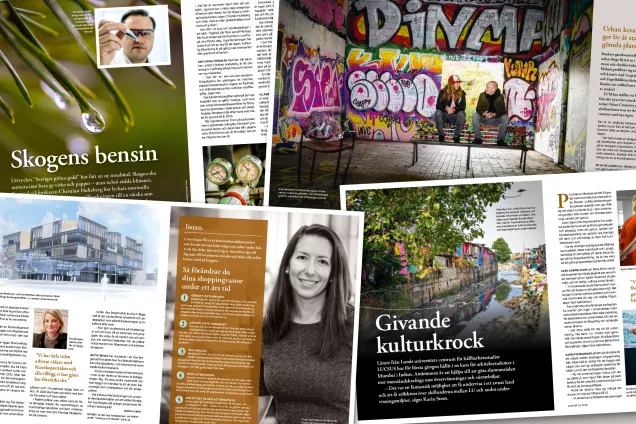The type of presence LU will have at SVS in the long term – 30 years from now – will be investigated. There is concern that other activities at LU may be compromised by the investment in SVS, creating gaps in today’s cohesive campus.
“It will be an extended campus, from the centre all the way out to Brunnshög and Science Village. We must ensure that we’re not creating any sink holes along Sölvegatan as some activities move out”, says Sven Lidin, dean of the Faculty of Science.
He has been given the task to investigate the best way for the University to establish itself at SVS – in the short and long term. In his work, he is supported by a working committee . LU’s materials science research, which is currently scattered, could be gathered in a new centre at SVS.
The dream scenario is for SVS, like certain other research villages around the world, to become a vibrant venue both day and night with research institutes, restaurants, visitor accommodation and cafés. But there is still a long way to go.
“Within ten years, one can reasonably expect the organisations that are transferring in the early stage to have completed their move. But Science Village will not be fully ready until 30 years from now”, says Sven Lidin, adding that the working committee is working from a short-term perspective – the next ten years – as well as a from long-term perspective of 30 years.
The vice-chancellor stresses that the establishment must be gradual and that it is about finding a reasonable spending level – while ensuring that LU does not miss this opportunity to develop research and external engagement.
Moving is under consideration for the Department of Physics, which is currently housed in worn down and too small premises at Fysicum, and for parts of the Department of Chemistry. Because the Laser Centre must be in close proximity to the beamline at both ESS and MAX IV it will also move, as will the Nanometre Consortium, which is in need of larger production premises and Brunnshög will allow for an expansion. Several smaller organisations such as the LU Centre for Scientific and Technical Computing (LUNARC), Big Science and Society (BISS) and LDC, will also move.
Who will foot the bill for Brunnshög?
“We currently don’t know. Our assignment includes investigating the financing. But it would only be natural – and in LU’s best interest – for the organisations that move to be responsible for a majority of the costs, otherwise there is a risk of biting off more than we can chew.
Facts Science Village Scandinavia
- The construction of premises for organisations, research and education in materials science and innovation, as well as for university branches, visitor accommodation, research institutes, services, gyms, restaurants and cafés, is currently underway.
- Will become part of the new district of Brunnshög.
- Buildings up to eight stories high with varying architecture are planned.
- A recreational greenway cutting through the area’s 18 hectares is planned.
- A tramline will connect the area as of 2019.
- Owned by the City of Lund, Region Skåne and Lund University.
JENNY LOFTRUP
.



